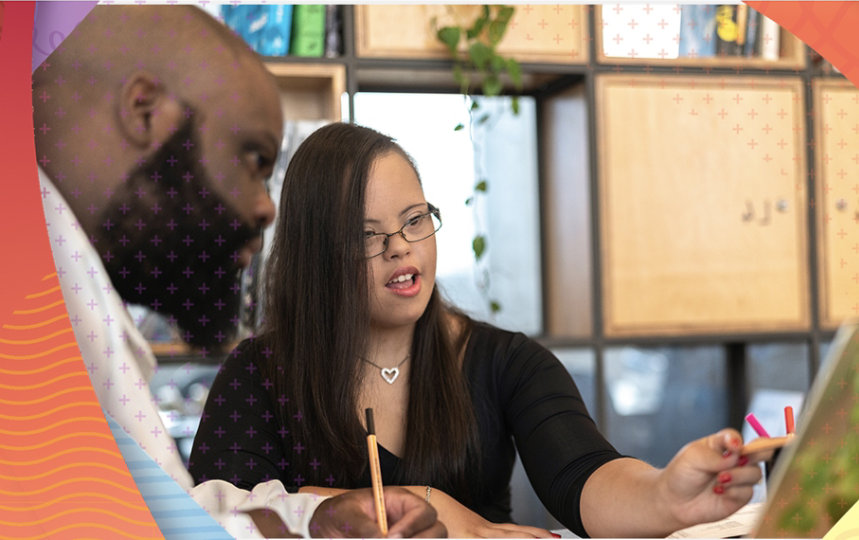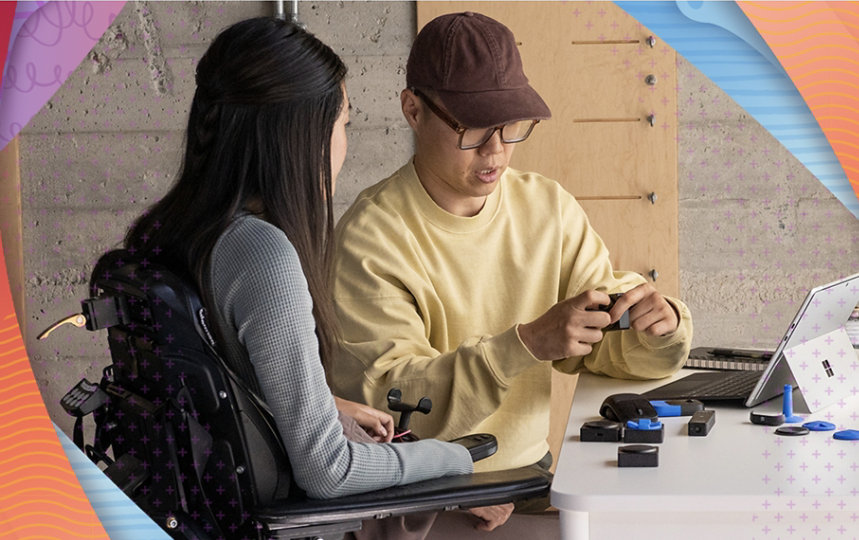Every person. Every organization. Every day. Everywhere.
When I think about Microsoft’s uniquely inclusive mission, the word “every” stands out: Empower every person and every organization on the planet to achieve more. The work of diversity and inclusion starts with this one word, every. This anchors us to our massive ambition to serve all customers and consumers in transformational ways globally. We set a formidable foundation of expertise and excellence in our workforce, and embracing difference raises the bar.
This special combination is what it takes to imagine, anticipate, and innovate the solutions, services, products, and ways of working that fuel our ability to be relevant and competitive today—and in the future.


Lindsay-Rae McIntyre, Chief Diversity Officer and Corporate Vice President, Talent and Learning
Our focus on diversity and inclusion has been going on for decades
Our journey continues, and the work is ongoing
Achieving a mission as bold as ours starts with culture
At Microsoft, a culture of inclusion invites people to contribute ideas, find innovative solutions to the most complex problems, and do their best work. Below are highlights from our core Microsoft workforce.

Demonstrating allyship

Diverse and inclusive
Our most global and transparent report
Below we share representation highlights for our core Microsoft business, excluding minimally integrated companies.
31.6%
Global women
Representation of women increased 0.4 percentage points year over year.
6.6%
US Black and African American
Representation of Black and African American employees decreased 0.1 percentage point year over year.
8.0%
US Hispanic and Latinx
Representation of Hispanic and Latinx employees increased 0.1 percentage point year over year.
27.2%
Global women in technical roles
Representation of global women in technical roles increased by 0.5 percentage points year over year.
28.9%
US datacenter population
The global population of datacenter employees grew 23.9% year over year and has more than tripled since 2020.
9.0%
US Disability
Representation of employees who self-identified as having a disability increased 0.2 percentage points year over year.
4.8%
US Military
Representation of employees who self-identified as having served in the US Armed Forces or as having Protected Veteran status remained unchanged year over year.
0.6%
US Indigenous
For the first time, we’re sharing details on Indigenous employees. The percentage of employees who self-identified as Indigenous remain unchanged year over year.
Explore more data from the report
As one of the most transparent companies of our size, we strive to expand the data and stories we share each year because we know others look to us for both accountability and context. In addition to adding global data around disability, military, and Indigenous representation for the first time this year, we also share details on multiracial employees, Asian representation, and additional aspects of Self-ID.
Innovating and delivering aligned to our mission
While data and insights are essential for measuring progress and informing our strategy, they must be paired with a deep understanding of the human experiences behind the numbers. Explore the people, perspectives, partnerships, and products that illuminate and contextualize our D&I work, and learn more about how we move from aspiration, to accountability, to action.

“As leaders, one of our core accountabilities is to ensure that we create and sustain a thriving organization for today and tomorrow. We do this by empowering our teams to pursue bold ambitions.”
—Priya Priyadarshini, Vice President of Global Talent Management

Cultivating careers that enable individuals to thrive

Leap NFL Legends Cohort

Military Software and Systems Academy
“One of the most important things we can do as leaders is nurture and empower the next generation of leaders.”
—Darryl Willis, Corporate Vice President Worldwide Energy and Resources Industry, Sponsorship program champion, and BAM ERG Executive Sponsor

“Diversity and inclusion is a crucial part of how we do business. It is a foundation and enabler of wellbeing, productivity, and good performance.”
—Peter Kuna, Chief of Staff, Western Europe, and D&I Executive Sponsor


One Microsoft D&I Plan

ERG Engage

Companywide priorities and expectations
Pay equity and median unadjusted pay analyses
We are sharing results from both analyses as part of our continued commitment to pay equity, representation, and transparency.
$1.0
earned for every $1.0 earned by comparison group
As of September 2024, our pay equity analysis shows we continue to have pay equity for each of the comparisons shared.

“Diversity and inclusion are key to our culture, mission, and business at Microsoft. Disclosing both our pay equity and median unadjusted pay analyses holds us accountable to our commitments. While each analysis on its own provides important insights, combined they are even more powerful—as long as we have pay equity, any pay gaps indicate opportunities to increase representation at more senior levels.”
—Mike Cyran, Vice President of Global Compensation, Performance, and International Benefits

“Supplier diversity extends beyond mere metrics; it’s about cultivating enduring partnerships that enable everyone to succeed. It’s essential to nurturing mutual success for Microsoft, our suppliers, and the diverse communities we represent.”
—Glenda Dengah, Director of Supplier Diversity

Ecosystem support

Digital skilling

Helping preserve history

Global nonprofit leaders
“As we reflect on our ongoing commitment at Microsoft, our goal remains to cultivate a culture of accessibility and integrate it into all aspects of our work, always guided by the insights of people with disabilities. This objective extends beyond Microsoft; it addresses a societal need and a fundamental right. Our efforts are crucial for the over 1.3 billion people with disabilities worldwide.”
—Jenny Lay-Flurrie, Chief Accessibility Officer


Solve for one, extend to many

Gaming for everyone

Inclusion from concept to creation
We listen to feedback and apply what we learn to continue to grow and improve
We invest in diversity and inclusion in service of our culture, mission, values, and business and customer needs—never to garner awards.
However, we recognize the value of third-party assessments, which can offer an objective view of how we’re measuring up to our commitments.

Best learning program

Best places to work

World’s top companies for women

Worlds best companies of 2024
With each report, we continue our mission
to intentionally include everyone.
Access previous D&I reports
For more about Microsoft’s commitments and performance, please visit Reports Hub.
Previous D&I insights blogs
Access country or region pay reports
Additional pay reports published by Microsoft.
















Follow Microsoft